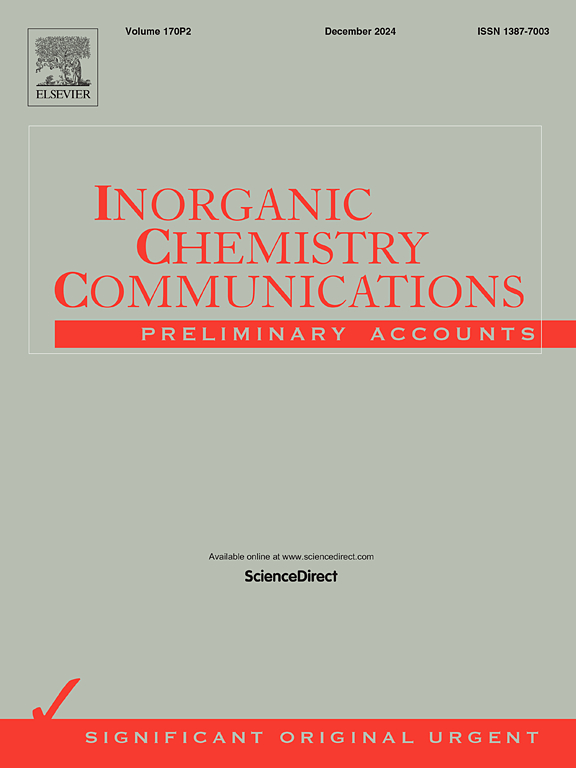二氧化钛上自生长CuO纳米团簇在可见光下高效光催化降解诺氟沙星
IF 4.4
3区 化学
Q1 CHEMISTRY, INORGANIC & NUCLEAR
引用次数: 0
摘要
选择简单有效的光催化剂是去除水中诺氟沙星(NOR)的一个挑战。本研究采用原位自生长的方法成功合成了CuO纳米团簇和二氧化钛(CuO/TiO2) z -图式异质结,并将其用于光催化降解NOR。1.4 % CuO/TiO2体系在60 min内的NOR降解效率为84.88 %,在可见光下经过5次循环后的NOR降解效率保持在78.42 %以上,分别高于CuO和TiO2。它们之间建立的内部电场加速了电子-空穴对的分离和转移,从而提高了光催化活性。此外,参与光催化反应的活性物质被确定为·O2−、·OH和h+自由基。通过质谱(MS)测试,研究了NOR光催化降解的三种可能途径。最后,提出了CuO/TiO2的异质结形成和电荷转移机理,并用DFT计算验证了其机理。本研究应用简单、低成本的CuO/TiO2在可见光下高效降解NOR,为大规模去除水中NOR提供了见解。本文章由计算机程序翻译,如有差异,请以英文原文为准。

In situ self-growing CuO nanoclusters on titanium dioxide for high-efficient photocatalytic degradation of norfloxacin under visible light
The selection of simple and effective photocatalysts is a challenge for removing Norfloxacin (NOR) from water. This study successfully synthesized CuO nanoclusters and titanium dioxide (CuO/TiO2) Z-scheme heterojunction using the facile in situ self-growing method and used for photocatalytic degradation of NOR. The 1.4 % CuO/TiO2 system achieves an 84.88 % NOR degradation efficiency in 60 min and maintains over 78.42 % efficiency after five cycles when exposed to visible light, which is higher than that of CuO and TiO2, respectively. The internal electric field established between them expedited the separation and transfer of electron-hole pairs, thereby boosting photocatalytic activity. Moreover, the active species that take part in the photocatalytic reaction were identified as ·O2−, ·OH, and h+ radicals. According to the mass spectrometry (MS) test, the possible three photocatalytic degradation pathways of NOR were investigated. Finally, the heterojunction formation and charge transfer mechanism of CuO/TiO2 are proposed and validated with DFT calculation. This study applies simple, low-cost CuO/TiO2 for efficient NOR degradation under visible light, providing an insight into the scale-up removal of NOR from water.
求助全文
通过发布文献求助,成功后即可免费获取论文全文。
去求助
来源期刊

Inorganic Chemistry Communications
化学-无机化学与核化学
CiteScore
5.50
自引率
7.90%
发文量
1013
审稿时长
53 days
期刊介绍:
Launched in January 1998, Inorganic Chemistry Communications is an international journal dedicated to the rapid publication of short communications in the major areas of inorganic, organometallic and supramolecular chemistry. Topics include synthetic and reaction chemistry, kinetics and mechanisms of reactions, bioinorganic chemistry, photochemistry and the use of metal and organometallic compounds in stoichiometric and catalytic synthesis or organic compounds.
 求助内容:
求助内容: 应助结果提醒方式:
应助结果提醒方式:


